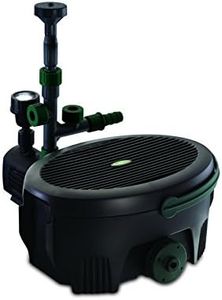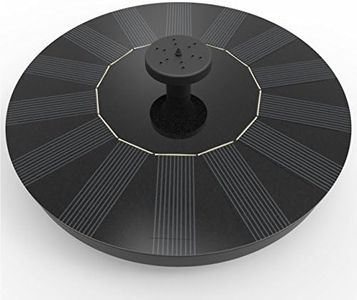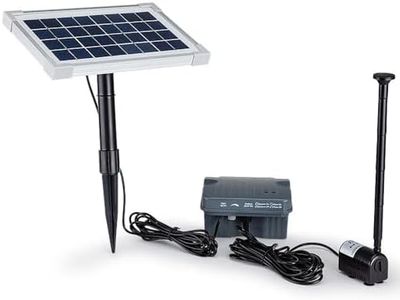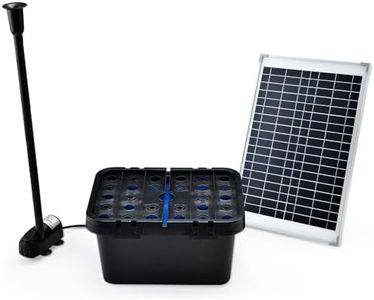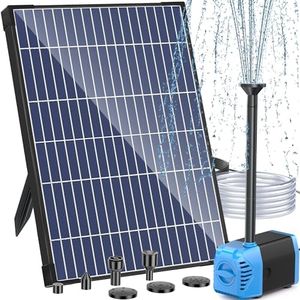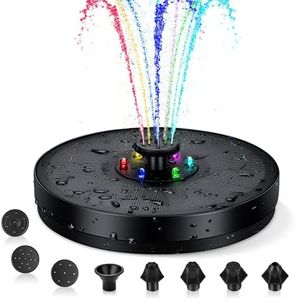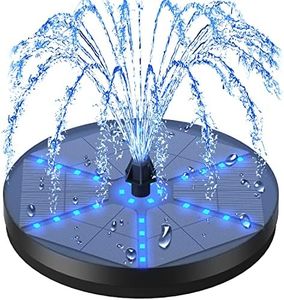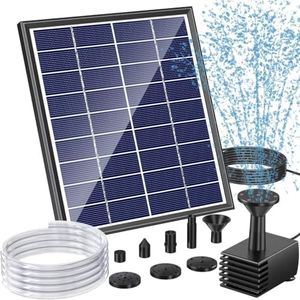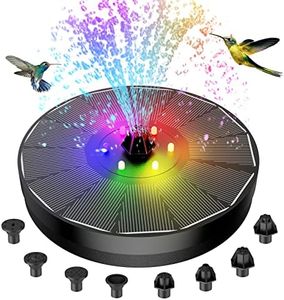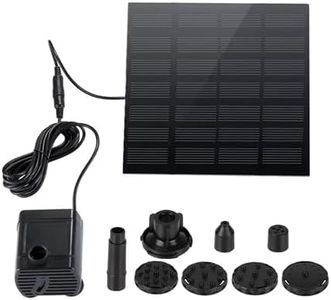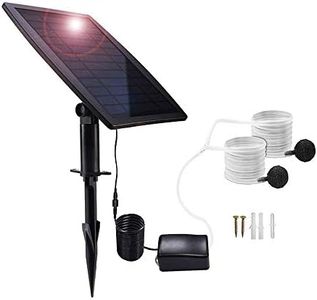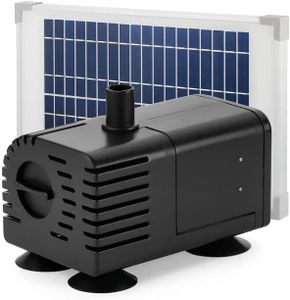We Use CookiesWe use cookies to enhance the security, performance,
functionality and for analytical and promotional activities. By continuing to browse this site you
are agreeing to our privacy policy
10 Best Solar Powered Pond Pumps
From leading brands and best sellers available on the web.Buying Guide for the Best Solar Powered Pond Pumps
Choosing a solar-powered pond pump is a smart move if you want to maintain water movement in your pond while minimizing energy costs and environmental impact. When deciding what model to get, it's important to consider the size of your pond, what you're hoping to achieve (such as aeration, water circulation, or powering a fountain), and your local weather conditions. You'll want a pump that fits your needs, is easy to install, and is reliable even during cloudy periods. Knowing what each key specification means helps you make a more informed decision.Solar Panel WattageSolar panel wattage tells you how much power the panel can generate from sunlight. This is important because it directly affects how well the pump can perform, especially in less sunny conditions. Lower wattage panels (less than 10W) are best for small ponds or simple features, while medium wattages (10-20W) serve average garden ponds, and larger wattages (over 20W) are suitable for bigger ponds or multiple water features. Consider your sunlight exposure and the needs of your pond to guide your choice — more wattage means better performance, especially in less-than-ideal weather.
Flow Rate (Gallons per Hour/Liters per Hour)Flow rate measures how much water the pump can move in an hour. This is key for keeping your water clean, fresh, and well-oxygenated, especially if you have fish or plants. Small decorative ponds or simple fountains may only need a low flow rate (up to 200 GPH/750 LPH), while medium-sized or fish-stocked ponds often benefit from mid-range rates (200-500 GPH/750-2000 LPH), and large or heavily stocked ponds require even more. To pick the right one, estimate your pond's volume and whether you’re using it for a gentle fountain or need strong water circulation.
Head Height (Maximum Lift Height)Head height refers to the maximum vertical distance the pump can push water. This is particularly important if your pump will need to send water up to a higher fountain or waterfall. Pumps with a low maximum head (under 3 feet/1 meter) are suitable for small features, while mid-range (3-6 feet/1-2 meters) handles moderate lifts, and high head heights (over 6 feet/2 meters) are for larger or multi-level displays. Plan your water feature’s height and make sure your pump's head height can handle it.
Pump Styles (Submersible vs. External)Solar pond pumps come as submersible (placed in the water) or external (located outside the pond but connected by tubing). Submersible pumps are quieter, easier to install, and are common for most home ponds. External pumps suit larger ponds or situations where easy maintenance is important, but installation is a bit more complex. Think about your pond's size, your access to the equipment, and how comfortable you feel about installation when picking between these types.
Battery BackupSome solar pond pumps come with a battery backup, allowing them to run even when the sun isn’t shining. This is important for consistent water flow at night or during cloudy conditions. Pumps without battery backups will only work when there’s sunlight. If your main concern is continuous operation for fish or vital water movement, choose a pump with a battery backup. Otherwise, if you only need the pump running when it’s sunny or for visual feature, you may not need this feature.
Spray Head/Fountain OptionsMany solar pond pumps include different spray head or fountain nozzle options, which affect the appearance and aeration pattern of the water. This matters if you’re looking for a particular visual effect or want to maximize oxygenation. Simpler models offer basic sprays, while others have multiple patterns. If the look of your pond is important or you want more flexibility, pick one with several nozzle options.
Ease of Installation and MaintenanceHow easy the pump is to install and maintain can make a difference in your long-term satisfaction. Simpler, tool-free installation and easily removable parts for cleaning will make upkeep easier. If you prefer a hassle-free experience, look for user-friendly designs and read up on how often the pump needs to be cleaned or serviced.
